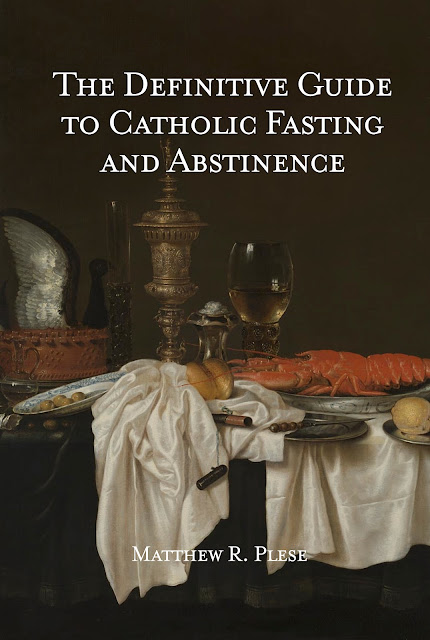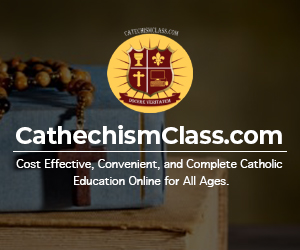“When the Rosary is said properly, my power is behind it. Say it with my Divine Son and me in mind…then each bead can conquer a host of men" (Words of the Blessed Virgin Mary to Blessed Mary of Agreda)
Far too often when the Rosary is recited as a group before Mass – or even on our own – it can be a series of prayers offered in haste without a focus on the words. If we focus too much on “saying our daily Rosary” to cross it off the to do list instead of praying each word, we can not expect these prayers to be pleasing to Our Lady or our Lord. While this is easier said than done, it is something we can intentionally try to counter. Today, pray the Rosary using the principles and advice lead out by St. Louis de Montfort in “The Secret of the Rosary” where he recalls the importance of saying the Rosary with attention, devotion, and meaning.
The Secret of the Rosary by St. Louis de Montfort
"The Secret of the Rosary" by St. Louis de Montfort is structured into 53 short chapters, each called a "Rose," which are divided into five sections. These sections explore different aspects of the Rosary, including its history, benefits, mysteries, and how to pray it devoutly. St. Louis de Montfort emphasizes that the Rosary is not just a mechanical repetition of prayers but a powerful weapon against sin, a source of grace, and a way to deepen one's relationship with God and the Blessed Virgin Mary.
What are the Benefits of a Rosary Said as a Group?
St. Louis de Montfort summarizes five benefits of saying the Rosary as a group:
- Generally, our minds are more focused during communal prayer compared to when we pray alone.
- When we pray together, each person’s prayer becomes part of a collective offering. If one person’s prayer lacks fervor, another’s devotion can compensate, creating a stronger, unified prayer. And in so doing, the fervent will encourage the lukewarm.
- Praying the Rosary alone brings the merit of that one Rosary, but when prayed with others, the merit is multiplied by the number of participants. This is the power of communal prayer. The same can be said for the Mass too.
- Public prayer holds greater power than private prayer to appease God’s anger and invoke His mercy. The Church, under the guidance of the Holy Ghost, has always emphasized the importance of public prayer, especially during times of widespread suffering and crisis.
- If the faithful pray five decades of the Rosary together, whether in a public setting or privately with others, they can gain an indulgence of ten years, once a day. A plenary indulgence may be obtained on the last Sunday of the month, provided they are free from venial sin, go to confession, receive Communion, visit a church, and pray for the Pope’s intentions—if they have prayed the Rosary together at least three times during the preceding weeks.
How Can We Pray the Group Rosary with Greater Devotion and Attention?
The following insights from St. Louis de Montfort should be internalized and incorporated into all of our Rosaries, especially when we pray the Rosary as a group before Mass so we are not distracted and praying in vain repetitions. The Rosary when prayed well is not a series of vain repetitions.
- Mindful Recitation: St. Louis de Montfort teaches that when praying the Rosary, it is essential to be fully present and attentive to the words being spoken and the mysteries being meditated upon. The Rosary is not just a vocal prayer but a meditative one, where each Hail Mary should be said with love and reverence, keeping in mind the mystery associated with each decade. Praying before religious images can help us from getting distracted.
- Praying with the Heart: St. Louis stresses that the Rosary should not be prayed mechanically or out of habit but with deep devotion and sincerity. Each prayer should come from the heart, with a genuine desire to honor God and the Blessed Virgin Mary. The act of praying the Rosary should be seen as a loving dialogue with Our Blessed Mother and Our Lord. When we see the Rosary as a true dialogue with Heaven, we can better understand how important and precious it is.
- Intention Matters: The intention behind the prayer is crucial. St. Louis encourages everyone to offer their Rosary with specific intentions, whether for personal needs, the conversion of sinners, or for the souls in Purgatory. By doing so, the prayer becomes more meaningful and spiritually fruitful. Recall the intention and fruit of each mystery while praying it.
- Quality Over Quantity: St. Louis de Montfort is clear that it is better to pray fewer decades of the Rosary well, with devotion and reflection, than to rush through all the decades without proper focus. He cautions against hurrying through the Rosary as if it were a task to be completed quickly. The quality of the prayer is more important than the quantity. If we are not able to focus, it may be better to say the Rosary at a different time in the day.
- Taking Time for Meditation: He also advises taking time to meditate on the mysteries of the Rosary, which are the key events in the lives of Jesus and Mary. This meditation is what gives the Rosary its power. We can say the mystery, read a few Scriptures verses regarding it, and even pause and visualize the scene before continuing on with the first “Our Father” of the decade.
Conclusion
"When people say the Rosary together it is far more formidable to the devil than one said privately, because in this public prayer it is an army that is attacking. It is very easy to break a single stick, but if you join it to others to make a bundle, it cannot be broken. In union, there is strength” (St. Louis de Montfort)
The next time we pray the Rosary as a group, may we call to mind the words of St. Louis de Montfort and truly see the Rosary for what it is – a weapon against the evil one. And to wield this weapon well, let’s try to offer each prayer of it with attention and deliberate focus. We are waging a battle against the devil by the Rosary. No battle is won by haphazard swings. Each bead takes dedication and attention.











